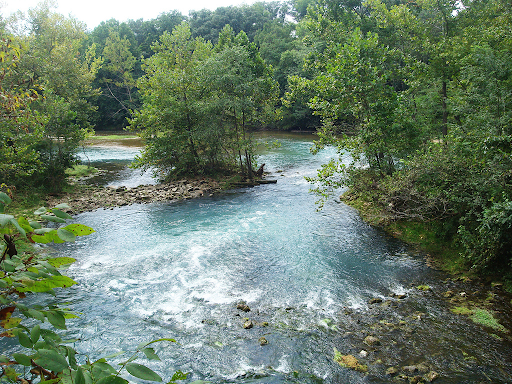Arkansas, Missouri, And Illinois Are A Regional, Natural Wonderland
Former President and avid outdoorsman Teddy Roosevelt wrote:
“There are no words that can tell the hidden spirit of the wilderness, that can reveal its mystery, its melancholy, and its charm.”
It would come as no surprise that Roosevelt himself is largely credited with the creation of the National Parks System (NPS), a collection of over 400 parks stretching from the Atlantic to the Pacific and everywhere in between. While one of his predecessors, President Woodrow Wilson, actually signed into law in 1916 the Organic Act, establishing the National Parks Service. However, lineage of National Parks can be traced to the first Roosevelt administration.
From the Grand Canyon to Teton to Yosemite to the Everglades, NPSpreserves and protects a mosaic of natural wonders and ensures all can experience these natural splendors.
When planning a trip through this heartland, here are a few of the gems of the national parks in a region colloquially known as the Mid-South that cannot be passed by:
ARKANSAS
FORT SMITH: A gateway to the Western frontier can be found in the land of razorbacks. Fort Smith was a popular trading post and last stop in early nineteenth-century America before entering what was then known as “Indian Territory.” Visitors can explore the jails and courtrooms of this frontier outpost, home to outlaws and lawmen and their incredible stories. For the Old West tall tale lover, this is a must-stop national park.
HOT SPRINGS: For hundreds of years, long before it was established as a national park, people of every stripe and creed have visited this incredible geological wonder for its healing and restorative power. The Hot Springs National Park offers creeks, forests, hikes through breathtaking vistas, in addition to the ancient thermal springs.
LITTLE ROCK CENTRAL HIGH SCHOOL: A different brand of historical relevance welcomes the visitor to this national landmark, Little Rock Central Highschool. Ground zero of the landmark court case Brown vs. Board of Education, this site commemorates the epic struggle of the Little Rock Nine as these children fought for equal rights and representation during the civil rights era. Visitors to one of the country’s most hallowed sights on the road to equality will learn more about the sacrifice of a brave few and the opportunities their courageous stand has provided for generations that followed and those still to come.
MISSOURI
GATEWAY ARCH: The Gateway Arch sits in the heart of St. Louis, commemorating the push for westward expansion. Former President Thomas Jefferson is also recognized at this site. To view the majesty of the arch, simply stand back and gaze at its remarkable architecture or take the tram to the pinnacle of the arch for a once-in-a-lifetime view. Additional educational tours can be found commemorating Dred Scott, a former slave who sued for his independence in the Old Courthouse in St. Louis.
OZARK: Not just the title of the popular Netflix show, Ozark National Riverway System is the country’s first national park to protect a river system. The Current and Jacks Fork rivers are two of the best floating rivers one will find anywhere. Spring-fed, ice-cold and clear, they are a delight to canoe, swim, boat, or fish. Besides the two rivers, the park is home to hundreds of freshwater springs, caves, trails, and historic sites such as Alley Mill for all to explore.
ILLINOIS
PULLMAN: Not all national parks are made of trees and mountains. This national monument, set in a south-side Chicago neighborhood, is a testament to the story of American industry. George Pullman was an industry titan who built the famed Pullman train cars of the 19th and 20th centuries. He also developed one of the first planned company communities in the U.S. hosting a grocery store, post office and hotel. This park tells the story of the workers who lived in Pullman and what life looked like in a company town, as well as the historic 1894 Pullman Strike and Boycott.
LINCOLN HOME: Born in Kentucky, but settled in Illinois where he rose to prominence as a lawyer, then congressman, and later our country’s 16th president, Abraham Lincoln is one of America’s most prominent figures. His home is enshrined as a monument to his life and belief that everyone in this country should have the opportunity to improve their economic and social status.





